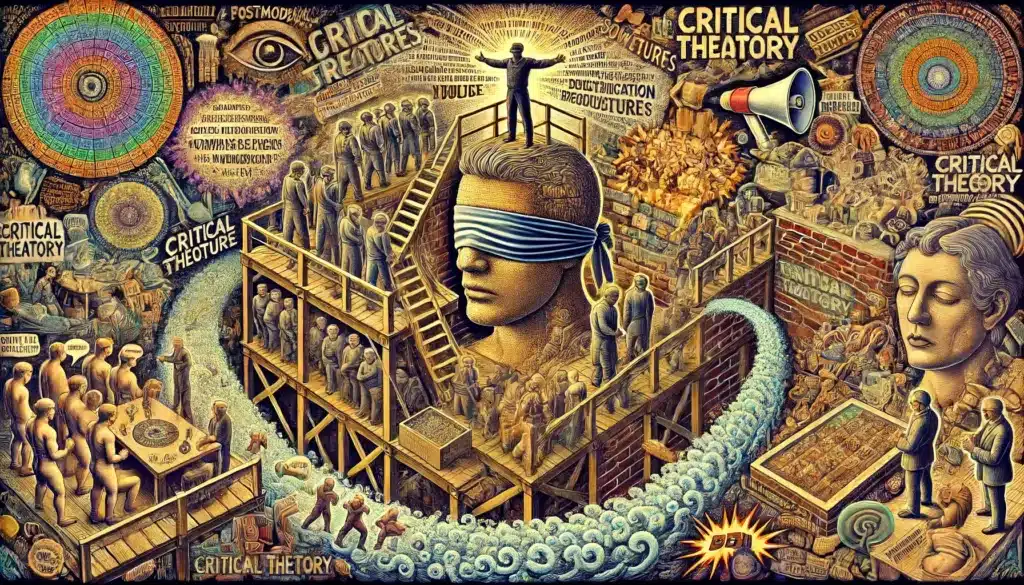Wokeism: Driving Society into Chaos
Wokeism has rapidly become a dominant force in contemporary social discourse, presenting itself as a movement for Social Justice and equality. However, beneath its surface lies a deeper, more troubling reality. At its core, Wokeism thrives on identifying and amplifying oppression, often creating division where none previously existed. This relentless focus on negativity and deconstruction fuels societal conflict and chaos. By constantly seeking out flaws in the fabric of society, Wokeism risks dismantling the structures that hold communities together, leaving us with perpetual grievance and instability. Wokeism Chaos.
The Central Role of Oppression
Wokeism thrives on the idea that oppression is everywhere. It asserts that various forms of discrimination—racism, sexism, ableism, and more—are deeply embedded in the fabric of society. Woke activists believe it is their duty to unearth these hidden injustices and challenge them. Without the concept of oppression, Wokeism would have no reason to exist.
Key Points:
- Oppression as the Foundation: Wokeism revolves around identifying and fighting against oppression.
- Constant Vigilance: Woke adherents are always on the lookout for signs of discrimination, even where it may not be obvious.
Why Wokeism Thrives on Negativity
Wokeism depends on a climate of negativity to survive and grow. It focuses on what is wrong with society, magnifying issues to fit its narrative. Critics argue that this approach can be harmful, fostering division and a sense of hopelessness instead of encouraging constructive change.
Key Points:
- Amplification of Flaws: Wokeism often highlights and exaggerates societal flaws.
- Division and Conflict: This focus on negativity can lead to increased division within society.

How Wokeism Finds and Creates Negativity
To sustain its focus on oppression, Wokeism employs several strategies to find or create negativity within society. These include deconstruction and intersectionality.
- Breaking Down Society: Wokeism uses post-modern deconstruction to analyse and critique language, traditions, laws, and behaviours, often finding hidden biases and power structures.
- Examples: Simple actions or words can be reinterpreted as oppressive, such as a compliment being viewed as reinforcing harmful stereotypes.
- Examining Overlapping Oppressions: Intersectionality explores how different forms of discrimination intersect and amplify each other. While this can provide insights, it can also lead to excessive scrutiny of individuals’ privileges.
- Creating Guilt and Division: By focusing on these intersections, Wokeism often creates guilt among those seen as privileged, further fuelling negativity.
The Philosophical Roots of Wokeism
Wokeism draws on the ideas of critical theory and philosophers like Foucault, Derrida, and Marx. These thinkers argued that power dynamics and social constructs shape society and maintain inequality. However, critics argue that these ideas are speculative and not based on scientific evidence.
Key Assumptions in Wokeism:
- Social Constructivism: The belief that societal constructs, such as race and gender, are designed to benefit certain groups.
- Systemic Inequalities: The view that society is inherently unequal and structured to maintain these inequalities.
- Inherent Racism and Bigotry: The idea that racism and bigotry are present in all aspects of society, even if they are not immediately visible.
The Consequences of Deconstruction
Deconstruction, a method used by Wokeism, involves breaking down societal norms and language to reveal hidden biases. While it can uncover important issues, it also leads to several problems.
Key Issues:
- Destruction Without Building: Deconstruction often breaks down societal structures without offering alternatives, leading to a sense of nihilism.
- Identity Politics and Culture Wars: This focus can result in increased division, as people are defined by their identities and perceived oppressions, leading to culture wars and social fragmentation.
The Perils of Perpetual Grievance
Wokeism promotes the idea that oppression defines one’s existence. This focus on victimhood can trap individuals in a cycle of grievance, where they see themselves as powerless and constantly oppressed. This mentality can lead to perpetual conflict and division within society.
Key Concerns:
- Victim Mentality: Individuals may become stuck in a cycle of grievance, seeing themselves as constantly oppressed.
- Endless Conflict: The emphasis on oppression can lead to ongoing conflicts within society, making it difficult to achieve harmony and peace.
The Need for Stricter Rules Against Agitators
To prevent Wokeism’s negative impacts from destabilising society, it is important for those in power to implement stricter rules against agitators and anarchists. By doing so, society can restore a sense of peace and harmony, allowing people to live without the constant fear of being targeted by woke critics.
Key Actions:
- Strengthening Social Stability: Stricter rules can help curb the divisive effects of Wokeism and protect the common good.
- Restoring Harmony: With appropriate measures in place, society can focus on constructive progress rather than being mired in endless conflict.
Conclusion: The Urgent Need for a Conservative Reassessment
Wokeism, with its relentless pursuit of identifying and amplifying oppression, is driving society into chaos. By focusing on deconstruction and perpetual grievance, it fractures communities, fosters division, and undermines the stability that societies need to thrive. While it may claim to seek social justice, its methods often result in endless conflict and a pervasive sense of negativity.
To counteract this, a conservative reassessment is urgently needed. We must recognise the dangers of allowing Wokeism to dominate the social narrative unchecked. Stricter rules and stronger societal norms must be enforced to protect the common good, prevent further fragmentation, and restore peace and harmony. By taking decisive action against these agitators and anarchists, we can reclaim a stable and united society where people can live together without fear of constant upheaval and divisive rhetoric. It’s time to stand firm against this destructive ideology before it leads us further down a path of no return.


